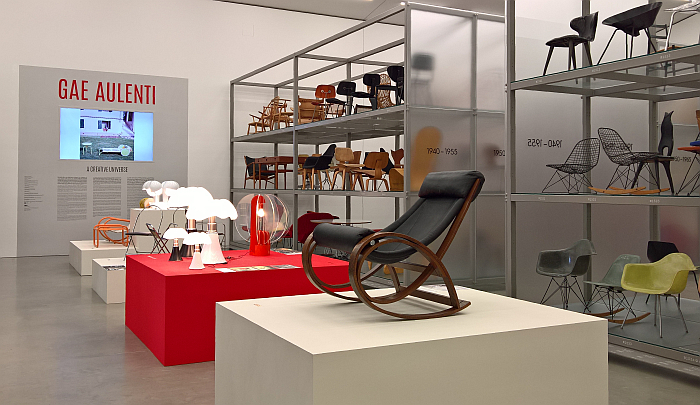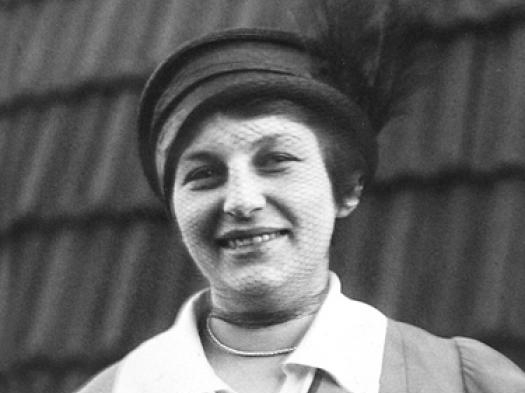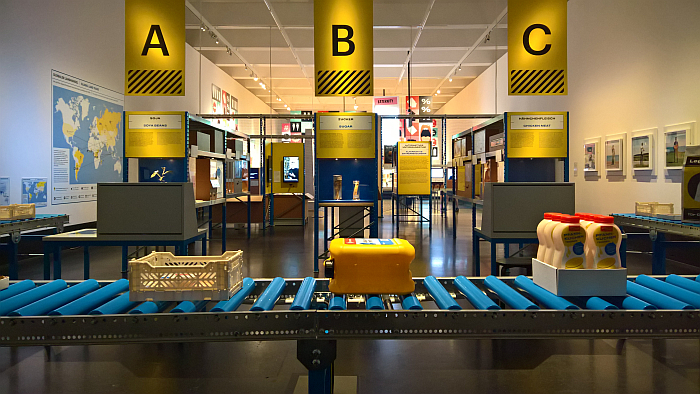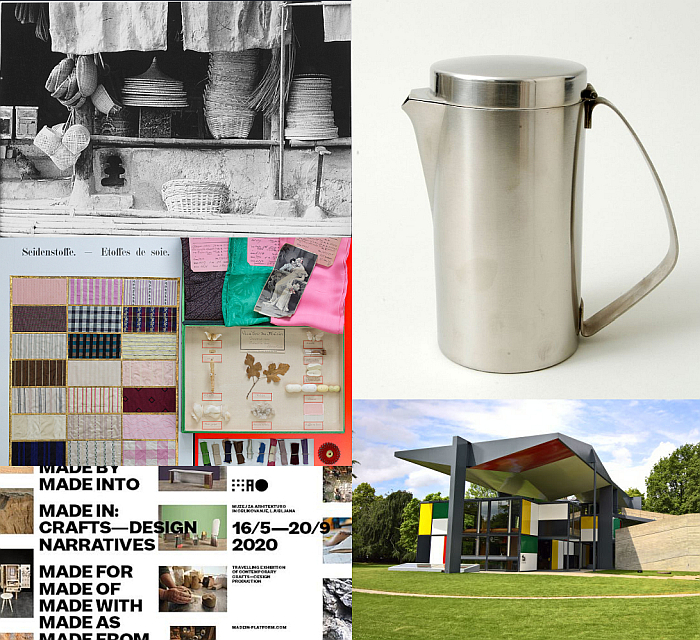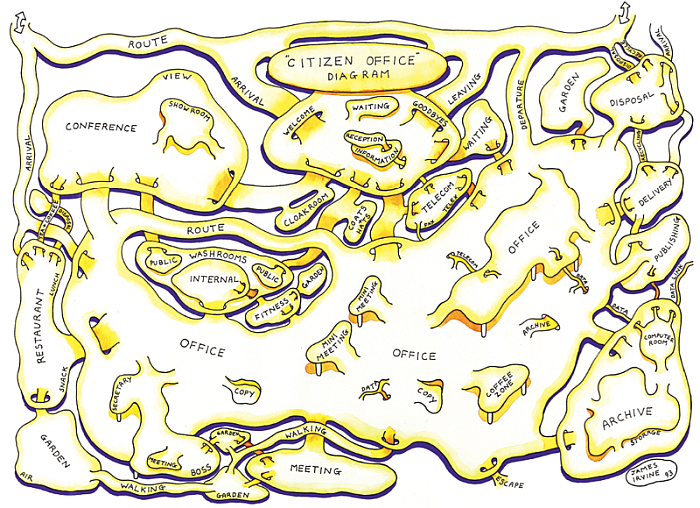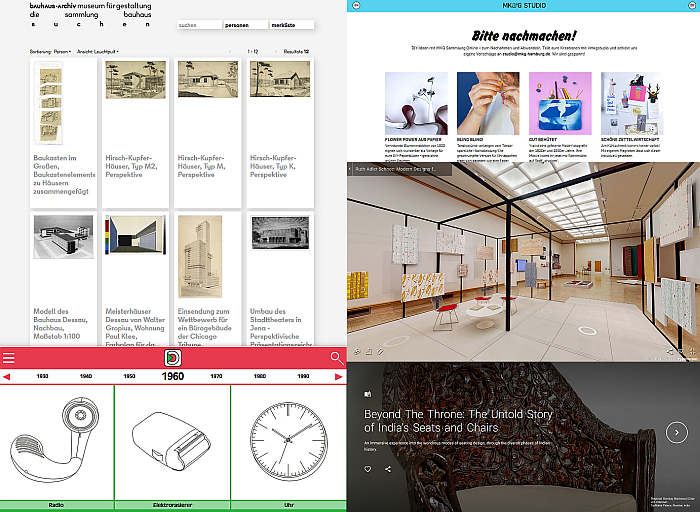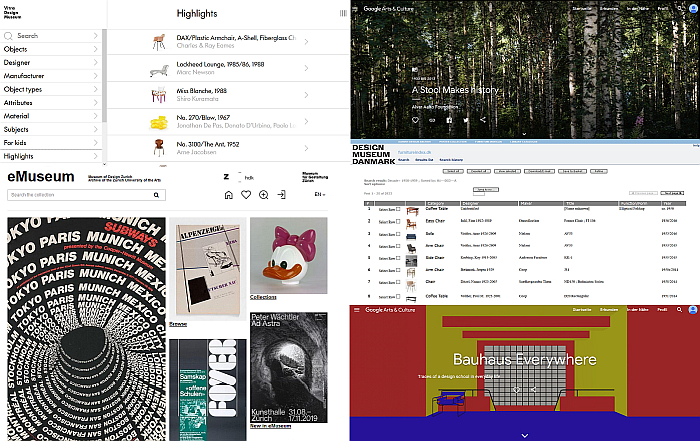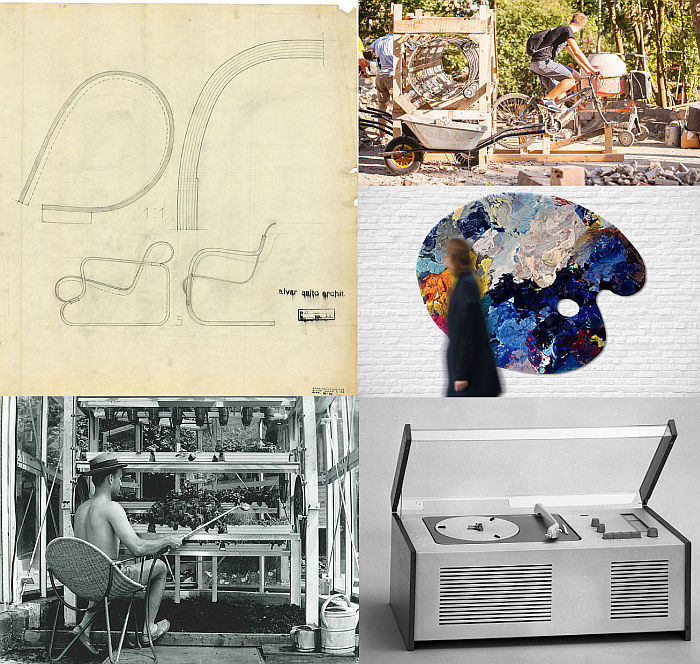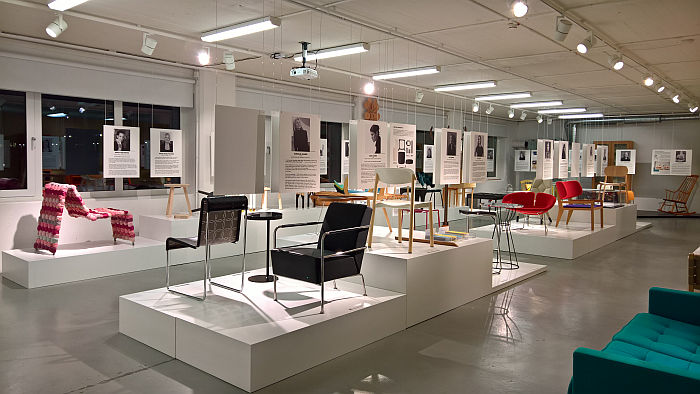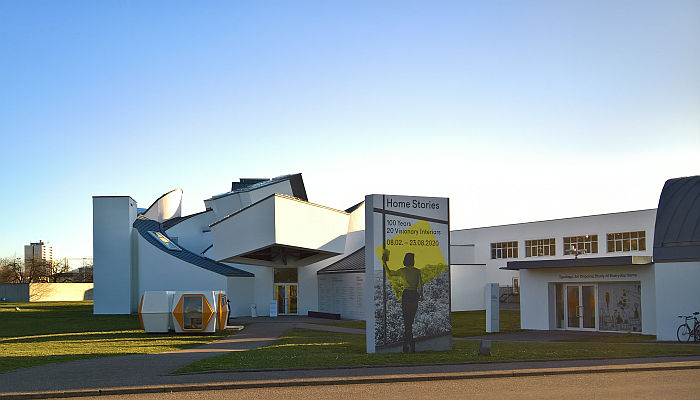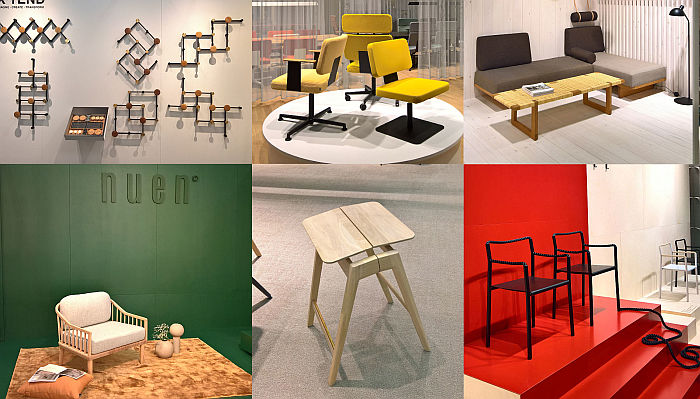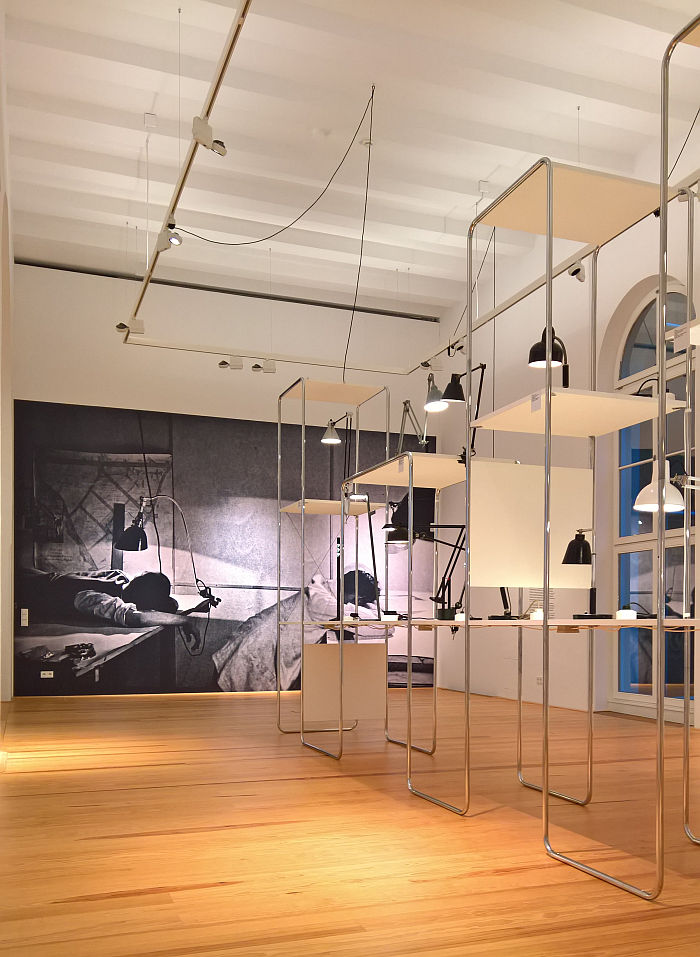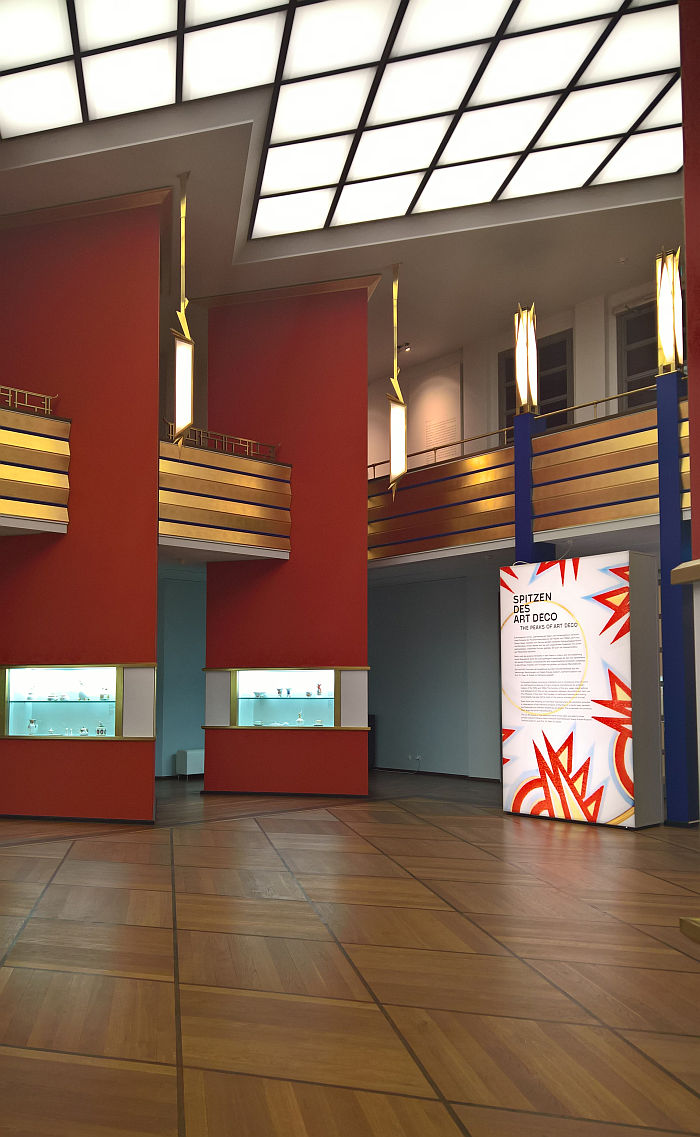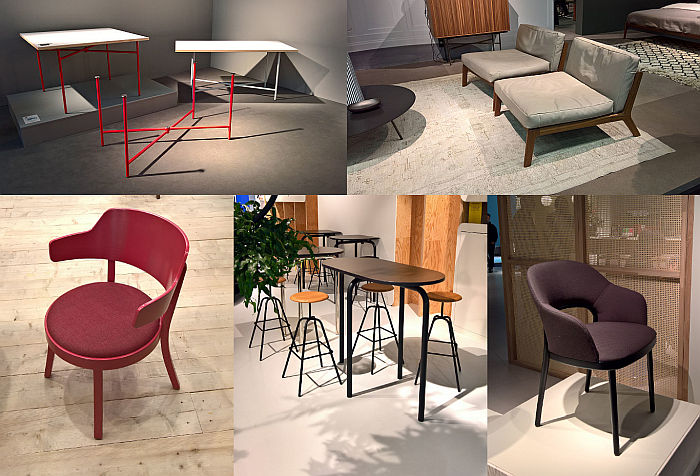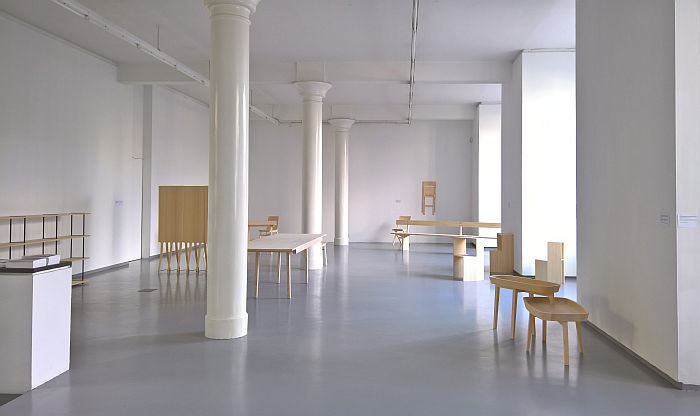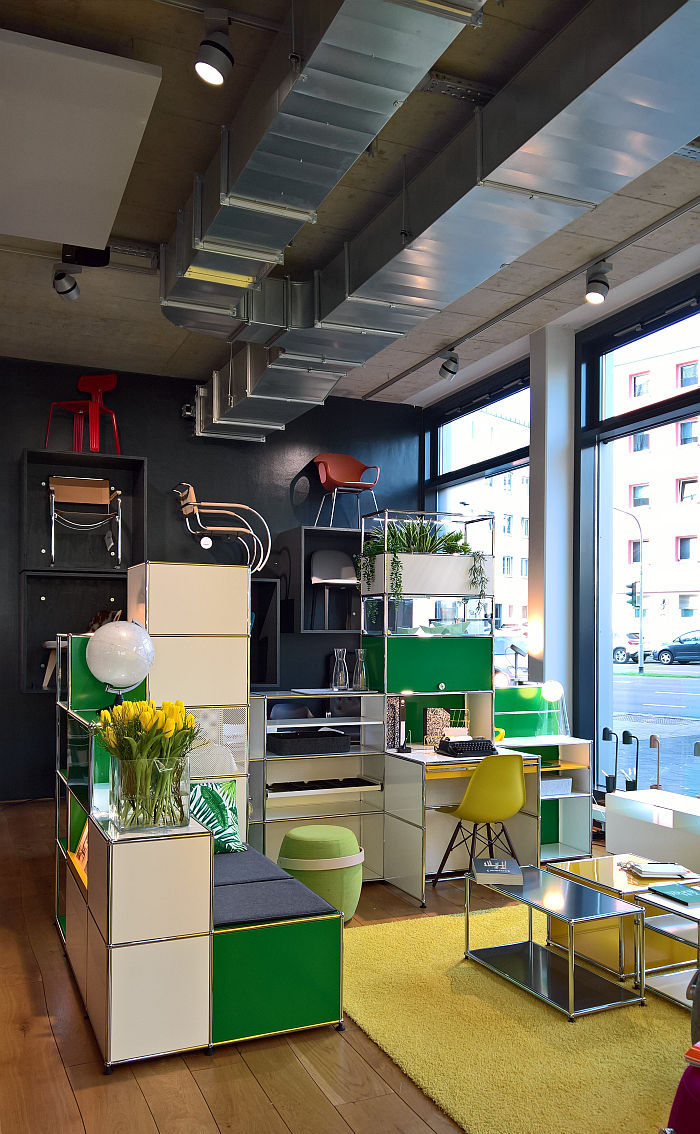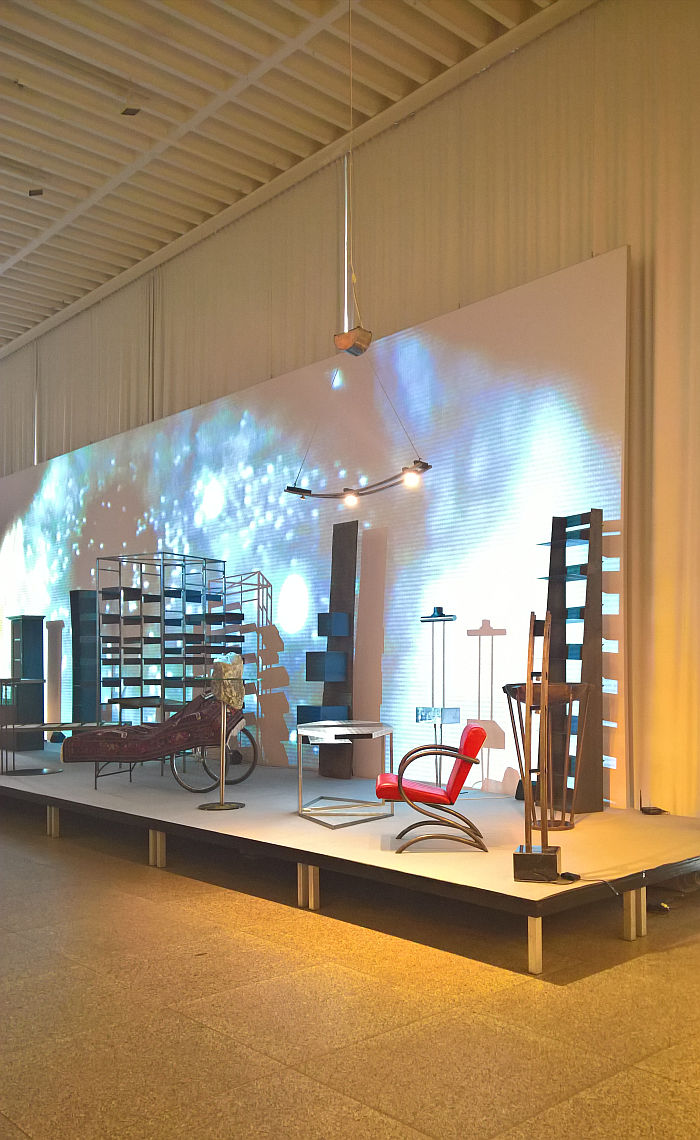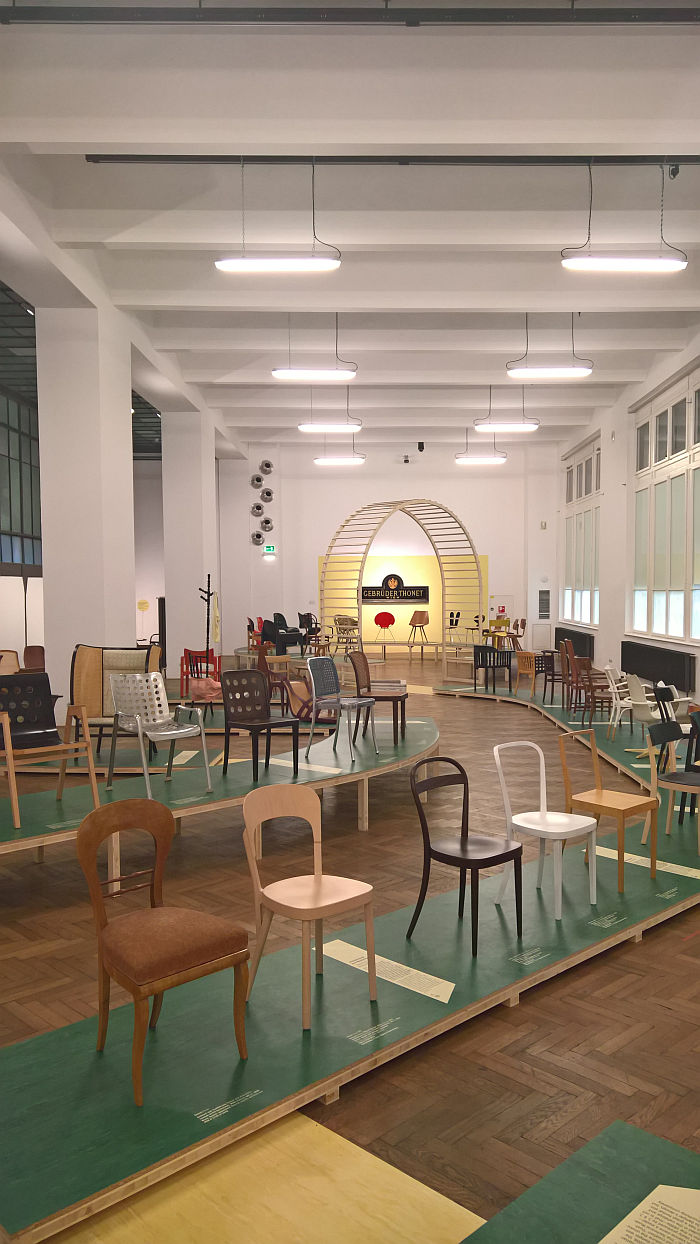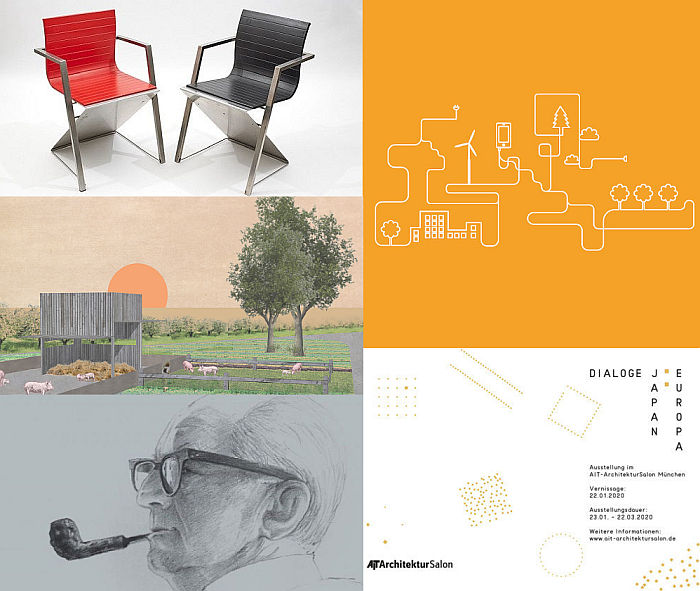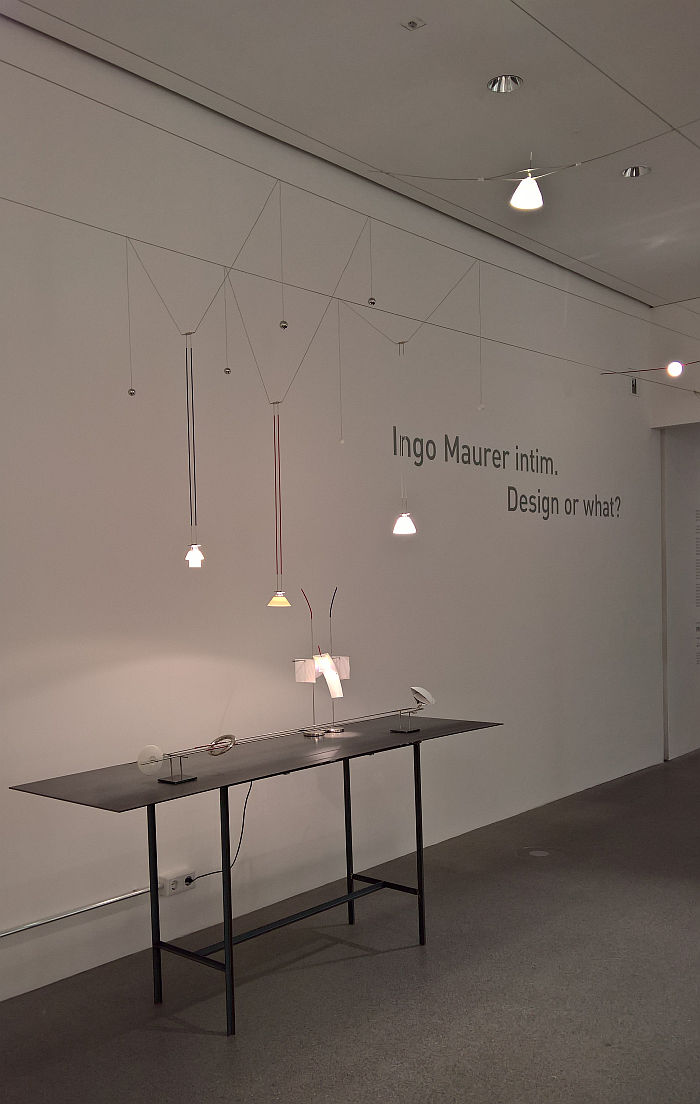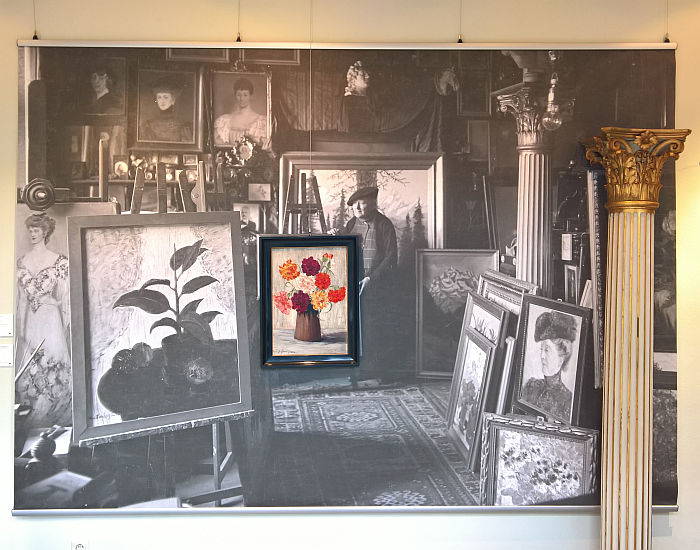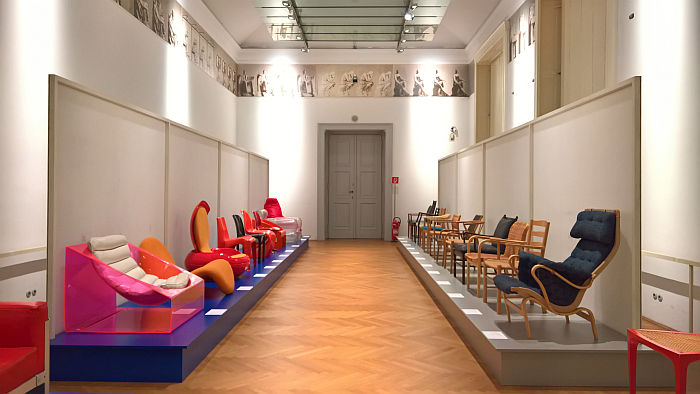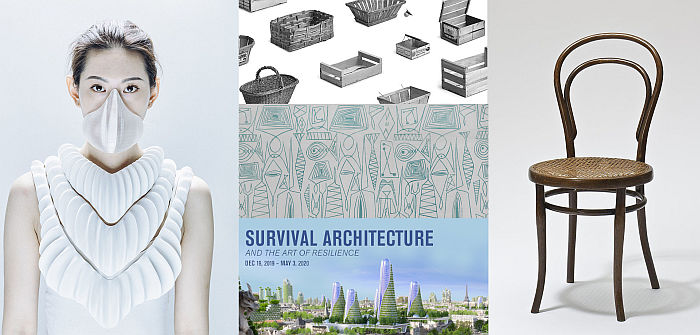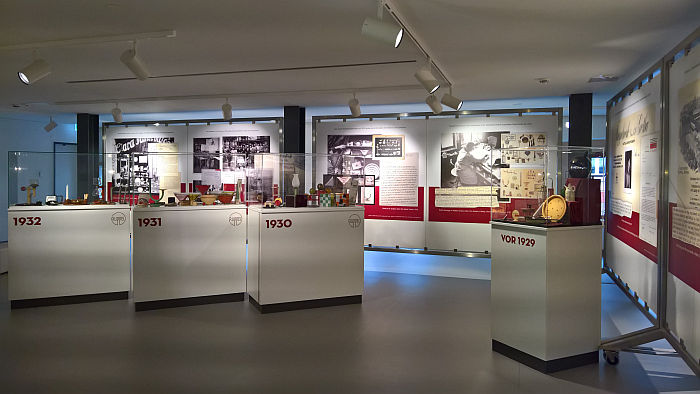Category: Exhibitions and Shows
Gae Aulenti: A Creative Universe at the Vitra Design Museum Schaudepot, Weil am Rhein
“It’s not possible to define a style in my work”1, opined once the Italian architect and designer Gae Aulenti.
With the exhibition Gae Aulenti: A Creative Universe, the Vitra Design Museum Schaudepot don’t contradict that opinion, but do provide for a framework for considerations on its validity……
smow Blog Design Calendar: June 16th 1885 – Happy Birthday Lilly Reich!
In a letter in 2008 to the editors of the Journal of the Society of Architectural Historians concerning remarks in an article on the staged illumination of Mies van der Rohe’s skeletal frame constructions, the architecture historian Kathleen James-Chakraborty refers to the “linking of Heinrich Tessenow’s Festspielhaus of 1910-12 in Hellerau with the installation for the glass industry that Mies designed (in collaboration with Lilly Reich, whom Petty does not mention) for the Stuttgart Werkbund exhibition in 1927.”1
“(in collaboration with Lilly Reich, whom Petty does not mention)”
(in collaboration with Lilly Reich, whom history so often does not mention, or when then fleetingly and sparingly, and which thus tends to leave Lilly Reich’s oeuvre in the shadows. Not least in the shadows of the staged illumination of Ludwig Mies van der Rohe…….)
Future Food. What will we eat tomorrow? at the Deutsches Hygiene-Museum, Dresden
Interesting, important and not irrelevant as hygiene is at the moment, the new exhibition at the Deutsches Hygiene-Museum Dresden doesn’t concern itself with pandemics, but with another subject of contemporary global interest, importance and relevance: food, food supply, food security.
And a theme not entirely unrelated to, certainly not unaffected by, our current reality……
5 New Architecture & Design Exhibitions for June 2020
We thought long and hard as to if we should continue our online exhibition recommendations series, or go back to offline exhibitions…… and decided for a return to offline.
We fully appreciate that in a lot of countries museums are still closed, as indeed are the international borders that you would normally and naturally criss-cross for a short city break to visit those that are open; however, many museums are open, many more are planned/planning to open in the course of June, and interesting and informative as online presentations can be, viewing an exhibition in a museum is the more satisfying experience, the more rewarding experience, the more enduring experience. And an important experience.
As we oft opine, museums aren’t just about collecting and preserving the past, nor just additions, adornments, to cafés and gift shops; rather they are locations for discourse, contemplation and reflection. Locations in which not only subjects which, in the overhyped, overheated marketplace of contemporary media may never find an audience, can be allowed to tell their story, can in many cases be allowed to reclaim their place in our (hi)story, but locations where subjects can be approached not only from a multitude of perspectives simultaneously, but from new, contradictory and often otherwise unachievable perspectives, and that without prejudice, bias or a commercial necessity to conform to some preconceived narrative.
Admittedly not every exhibition manages that, many do succumb to an egoistic desire to be a “blockbuster” and thus present an accepted, tourist gaze, presentation of their subject; but there is no reason why every exhibition cannot discuss lesser illuminated subjects without fear or favour.
And when museums do such, and do such well, do such with honesty and impartiality, they become locations which invite, encourage and enable you to extrapolate on that which is presented and to carry your thoughts and arguments over into other arenas and areas, and thereby helping us all approach better understandings of ourselves, individually and collectively, and of the world around us, the innate natural and that which human society has created. While also improving our knowledge of the subject at hand. Clarifying that you may not have understood a subject as completely as you believed you did.
And that’s not an experience and opportunity that one should ever undervalue or neglect. And certainly never stop searching for.
While specifically in context of design exhibitions; for all that online exhibitions can and do offer, there is simply no substitute to being in the presence of a physical object, nor can we imagine there ever will be.
And so while all museums remain virtually open 24/7, and we’d encourage each and everyone of you to use museums’ online services as tools and resources; the fact that many are physically open is much more important. And something to be treasured and made use of.
If made use of with appropriate awareness and sensibility at this moment. Therefore, if you feel comfortable visiting a museum, please before doing so (a) check in advance to ensure that it is actually open, short-term changes can occur and (b) familiarise yourself in advance with ticketing, entry, safety, hygiene, etc rules and systems. And during your visit stay safe and responsible. And receptive for new ideas, new opinions, new names, new perspectives, new connections, new understandings……
smow Blog #officetour…….
Back in the year 1 BCE, Before Corona Epidemic, we developed a plan to use 2020 to tour through contemporary office design, a tour to be undertaken both physically and theoretically.
A very simple plan developed in the knowledge that in October the Orgatec office furniture fair would be staged in Cologne, and that such a tour would, hopefully, allow us to approach Orgatec 2020 from differentiated and manifold perspectives.
And a simple plan, which, and as with all simple plans, proved more difficult than anticipated. And became all but impossible in the year 1 CE. Or at least the physical part did, the theoretical part remains unaffected. And as older, more loyal, readers will understand, we’re at our happiest with the theoretical components of life.
Thus in the coming weeks we will present a series of (desk bound) reflections and considerations on aspects of both the contemporary office and contemporary public/civic/commercial interiors, whereby our Design Calender post on the opening of the 1993 exhibition Citizen Office at the Vitra Design Museum can be considered an official unofficial first step….. one originally planned as a fourth or fifth step…….
By way of a fuller introduction, and an explanation that despite the unequivocal title the smow Blog #officetour isn’t limited to offices , ⇓⇓⇓ the text we’d written as the original introduction…..
smow Blog Design Calendar: April 30th 1993 – Opening of Citizen Office at the Vitra Design Museum, Weil am Rhein
With the exhibition Citizen Office the Vitra Design Museum staged not only their first conceptual, research based, exhibition, but also one of the first museal reflections on “the world of the office”.
Reflections which not only pointed towards new directions and understandings then, but which offer insights and lessons for today…….
5 Online Architecture & Design Exhibitions for May 2020
While we’d all much rather physically visit architecture and design museums, our current enforced virtual patronage does allow us all an excellent opportunity to begin to understand architecture and design museums as more than just an exhibition space with shop and café, and to begin to learn to interact with them, and for all their collections, in new, proactive, manners. To understand architecture and design museums as tools as much as institutions.
And while a virtual visit can never replace a physical one, it can help us extenuate and expand our understandings and thereby allow us to take even more from that physical visit. And those physical visits will return.
Until then, volume two of our online recommendations takes you from your sofa to Berlin, Hamburg, Bloomfield Hills, Mumbai, München, and hopefully and awful lot further…..
5 Online Architecture & Design Exhibitions for April 2020
The museums may be closed, travel restricted and leaving your home, when possible, unadvised….. but that’s no reason to restrict your cultural uptake, far less neglect the development of your architecture and design understandings.
Or put another way, if you can’t get to the museum….. let the museum come to you.
Five online architecture and design exhibitions and museum collections to explore from your sofa, bed, garden, balcony, wherever…..
5 New Architecture & Design Exhibitions for March 2020
Back in the days of the Roman Republic Martius was the month in which troops mustered in preparation for the coming battle season, to prepare, as it were, to March into war.
Please don’t! The world’s out of control enough as it is!
Rather use the coming spring as your incentive, to (a) make up for some of those New Year’s Resolutions you’ve long forgotten you’d made and (b) to march into a future of new impulses, new understandings, new perspectives, a new world. To march into an architecture and/or design exhibition.
Our five recommendations for new showcases opening in Martius MMXX can be found in Ulm, Gent, Vienna, Kobe and Dresden…..
Female Traces at the Museum of Furniture Studies, Stockholm
It’s not just the presence, or lack of, female designers in the contemporary furniture industry, nor just the presence, or lack of, female designers in museum exhibitions that informs and influences understandings of the contribution of female designers to contemporary furniture design and the (hi)story of furniture design, it is also the presence, or lack of, female designers in design museum and applied arts museum collections, those depositories and reserves of furniture design’s history and sources of inspiration for furniture design’s future.
With the exhibition Female Traces the Museum of Furniture Studies Stockholm reflect on the gender mix of their own collection.
Home Stories: 100 Years, 20 Visionary Interiors at the Vitra Design Museum, Weil am Rhein
“What is the goal?” asked Elsie de Wolfe in 1913 in context of domestic interior design.
“A house”, she answered, “that is like the life that goes on within it, a house that gives us beauty as we understand it and beauty of a nobler kind that we may grow to understand, a house that looks amenity.”1
How Elsie de Wolfe understood such, and how over the intervening century and a bit understandings of life, beauty, nobler beauty, amenity, the goal(s) of domestic interior design have developed and expanded are explored and discussed in the Vitra Design Museum’s exhibition Home Stories: 100 Years, 20 Visionary Interiors.
Stockholm Furniture Fair 2020: High Five!!
With the 2020 edition Stockholm Furniture Fair celebrates its 70th birthday.
Grattis på födelsedagen!
We did think about taking along a cake, but knew the halls of Stockholmsmässan would be filled to the rafters with Kanelbullar, as indeed would we.
And so by way of a present, a Stockholm Furniture Fair 2020 High 6!!
100 Years of Positionable Light @ the Museum für Kunst und Gewerbe Hamburg
“In many workshops and offices it is regularly attempted to achieve both direct and semi-indirect lighting by means of large, single, light sources, that is, to work only with ample general lighting. Yet as pleasant as this type of lighting may be, in many cases it proves unsatisfactory on account of certain inherent shortcomings”1
So opined in 1926 the German engineer Curt Fischer.
Rhetorically. For in 1919 he had already patented his first solution to resolving such “inherent shortcomings”.
How, and where his considerations have taken contemporary lighting design, are discussed and explored in the exhibition 100 Years of Positionable Light at the Museum für Kunst und Gewerbe Hamburg.
Spitzen des Art déco @ the Grassi Museum für Angewandte Kunst, Leipzig
On March 6th 1927 the exhibition Europäisches Kunstgewerbe opened at the Grassimuseum Leipzig, not only a presentation of contemporary European applied arts but the inaugural exhibition in the museum’s (almost finished) new home on the city’s Johannisplatz.
With the exhibition Spitzen des Art déco the Grassi Museum für Angewandte Kunst Leipzig stage not only a presentation of European Art déco porcelain, but a reminder of both the Johannisplatz complex’s Art déco heritage and the vibrancy, colour and roar of the 1920s.
IMM Cologne 2020: High Five!!
Apart from the chance to peruse and consider the collections and new products of and from a wide variety of manufacturers and labels, one of the real joys of visiting any furniture fair is the opportunity it allows to observe designers in conversation with manufacturers and labels. For all in pairings that currently don’t formally exist. We never eavesdrop on such conversations, that would be rude, and to overplay our prowess as spies; but we do enjoy imagining what may arise from those conversations, imagining the enthralling objects and brave new world that awaits us all.
A brave new world that far from being a refuge from our contemporary world in many regards helps sharpen our focus on the contemporary world that surrounds us, the collections and new products of and from a wide variety of manufacturers and labels laid out for our consideration and perusal.
New products that may have begun as an informal conversation on a trade fair stand. And now look where that’s developed…..
And so, and with our customary caution that we have invariably missed one or the other gem, which in this case we know we did, but which we plan to make up for later, an IMM Cologne 2020 High Five!!
Passagen Cologne 2020: Generation Köln trifft Bregenzerwald
In our post from the exhibition Design Gruppe Pentagon at the Museum Angewandte Kunst Cologne we noted that Gallery Pentagon was laterally based in Cologne’s Bismarckstrasse. Bismarckstrasse 50 to be precise, a former cardboard packaging factory which in the 1980s was developed into spaces for creatives of various ilks…..
…..Bismarckstrasse 50 is still home to creatives of various ilks, and is still home to a gallery, Galerie Martina Kaiser, where in context of the 2020 Passagen Interior Design Week a new generation of Cologne designers are presenting new projects, projects raised not in the agitations, turmoils and transformations of 1980s West Germany that informed the Pentagonia’s works, but rather in the calm, alpine forests of Austria’s Bregenzerwald.
Yet objects no less expressive for the change of air…….
Passagen Cologne 2020: USM Haller HomeWork @ smow Cologne
Our increasingly networked, digital, virtual society is not only changing our relationship to innumerable everyday activities, activities such as personal communication, shopping or watching television to name but three, and thereby activities which a few short years ago seemed destined to remain unchanged for ever, but is also changing our relationship to work, be that in terms of what we do, where we do it or how we do it.
Changes which invariably place both new demands on our furniture, and our understanding of the term “functional” in context of furniture; an understanding which a few short years ago seemed destined to remain unchanged for ever.
With the showcase USM Haller HomeWork smow Cologne consider responses to such evolutions with the assistance of the USM Haller modular furniture system.
Design Gruppe Pentagon @ the Museum für Angewandte Kunst, Cologne
Within any regular pentagon one can locate, in numerous, manifold, relationships, the Golden Ratio, that centuries old guarantor of harmony, balance, beauty….
And within an irregular Pentagon?
With the exhibition Design Gruppe Pentagon the Museum für Angewandte Kunst Cologne search for an answer in context of the 1980s Rheinland design quintet…….
Bentwood and Beyond. Thonet and Modern Furniture Design @ the MAK – Museum für angewandte Kunst, Vienna
The long and winding (hi)story of furniture design is largely one of evolution not revolution, largely one of innumerable, often imperceptible, social, cultural, economic, technical, et al transformations, movements, hindrances and undulations which slowly, continually, combine and interact to widen and deepen the river as it flows. A process aided, abetted and accelerated by irregularly arising confluences where a new tributary flows into the unflinchingly onwards rolling mainstem.
One such being inarguably Michael Thonet.
With the exhibition Bentwood and Beyond. Thonet and Modern Furniture Design the MAK – Museum für angewandte Kunst Vienna navigate the history of that tributary and explore its legacy and contemporary relevance, and relationship, to the course of furniture design.
5 New Architecture & Design Exhibitions for January 2020
Off late, and certainly in a European context, January has become a month of forgoing, eschewing and general abstention, with campaigns such as Dry January and Veganuary extolling us to utilise our guilt at our dangerous, decadent, gluttony of late December as an impetus to radically alter our behaviour, as a catalyst for reduction.
And while less is unquestionably more, and thus worth striving for, fundamental change is invariably more sustainably and meaningfully achieved through better understandings rather than by sudden, extreme, knee-jerk, changes; that more information can lead to less harmful choices. More information and better understandings such as those an architecture or design exhibition can provide.
We can’t promise the following five will necessarily change your (unhealthy) relationship to alcohol or food, they should however allow for new perspectives on the world around us, new perspectives which should allow for new reflections on your relationship to that world, and, potentially, a healthier, happier you. And a healthier, happier world. Potentially.
Ingo Maurer intim. Design or what? Die Neue Sammlung – The Design Museum, Munich
In context of the 2013 exhibition Lightopia at the Vitra Design Museum a point of particularly intense illumination, pun intended, was the difference between light and lighting, and that the craft of the lighting designer is to bring a tangible form to an intangible material.
With the exhibition Ingo Maurer intim. Design or what? Die Neue Sammlung – The Design Museum Munich celebrate, and remember, one of Germany’s leading designer’s of light…..
Mathilde von Freytag-Loringhoven. Painter, Author, Animal Psychologist and Bauhaus Critic at the Stadtmuseum Weimar
Looking back from the safety of 2019 it can be all too easy to assume that Bauhaus was a popularly received and much celebrated institution.
❌
From its very earliest days, even before the first students had arrived in Weimar, the institution met with tenacious criticism and steadfast resistance; and arguably nowhere more so than in Weimar.
With the exhibition Mathilde von Freytag-Loringhoven. Painter, Author, Animal Psychologist and Bauhaus Critic the Stadtmuseum Weimar introduce one of the institution’s most tenacious and steadfast opponents; and in doing so allows not only for considerations on some of Bauhaus’s lesser discussed (hi)story, but also for reflections on the political, social and cultural realities of 1920’s Germany……
Sitzen 69 Revisited @ MAK – Museum für angewandte Kunst, Vienna
“Since the founding of the museum in 1864 there has been an ongoing committent to honouring the statute of the house, namely, to promote the art industries and the arts and crafts and to develop the taste of contemporary society”1
So noted the, then, Österreichisches Museum für angewandte Kunst’s Director Wilhelm Mrazek in the catalogue to the museum’s 1969 exhibition Sitzen 69, Sitting 69, an exhibition which sought “to develop the taste of contemporary society” in terms of sitting/seating.
And that through a presentation of (largely) wooden chairs, several of which dated back to the 1930s and 1940s………
…….in 1969.
?????????
With the showcase Sitzen 69 Revisited the, now, MAK – Museum für angewandte Kunst initiate a debate on the apparent contradictions inherent in Sitzen 69, and on the wider question of the mediation of design, through a presentation of objects presented in 1969 juxtaposed with some of those chair designs that weren’t. Chair designs that one may have, reasonably, expected should, would, have been……
5 New Architecture & Design Exhibitions for December 2019
“…when we shall hear
The rain and wind beat dark December, how,
In this our pinching cave, shall we discourse
The freezing hours away?”
asks Arvirargus of his brother Guiderius in Shakespeare’s play Cymbeline, before lamenting,
“We have seen nothing”
Easily solved old boy, a visit to an architecture or design exhibition should not only provide for new, stimulating, impressions but plenty of discourse throughout not only December but for many, many months to come.
For all a visit in December 2019 to the following new exhibitions opening in Vienna, Holon, Bloomfield Hills, Weil am Rhein & San Francisco……..
Inspired by Bauhaus – Gotha Experiences Modernity @ The KunstForum Gotha
Sitting unassumingly, and largely unnoticed, in the middle of Germany, the city of Gotha may have only little resonance with the majority, with the great unwashed; however, every European royal family can trace their lineage back to Gotha: most famously the English royal family through Queen Victoria’s 1840 marriage to Prince Albert, but the royal houses of Sweden, Denmark, Spain, Holland, Norway, you get the idea, can all trace their lineage back to and through Gotha.
Gotha and royalty ✔
Gotha and inter-war Modernism ¿✔?
